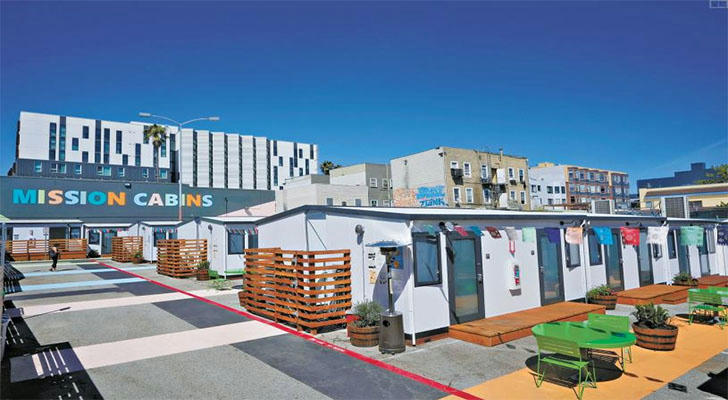US Asylum Department: Helping Homeless People Find Resources in Their Communities
Every night, over 580,000 Americans lose their homes. Can community support bring hope and a new start to these individuals?

Understandi
Homelessness is a significant challenge that affects many Americans. In simple terms, it means not having a stable, safe place to live. Below are some key points a
·Widespread Issue:
·E
·T
·Economic Pressures:
·High
·A lack of affordable housing fo
·Health and Social Challenges:
·Without a permanent
·Mental heal
·Recent Trends:
·Data over the past few years show that homelessness has been growing, especially in large cities.
·The COVID-19 pandemic increased housing insecurity, highlighting the need for stronger community-based solutions.
The Role of Community Resources
Local resources can play a crucial part in supporting people facing homelessness. By connecting individuals to available services, communities can help improve lives. These resources include:
·Shelter and Transitional Housing:
·Temporary shelters offer a safe place for individuals to sleep and recover.
·Transitional housing programs provide a more structured environment, with support services such as counseling and skills training.
·Healthcare and Mental Health Support:
·Community clinics offer essential medical care to those who lack regular access.
·Mental health services, including counseling and psychiatric support, help individuals manage stress and overcome challenges.
·Job Training and Employment Programs:
·Training centers teach useful job skills that can help secure employment.
·Partnerships with local businesses create pathways to meaningful work, which in turn builds a stronger foundation for a stable life.
·Nutritional and Social Services:
·Community kitchens and centers offer nutritious meals and a place to connect with others.
·Social services often combine education, recreational activities, and nutrition to promote overall well-being.
Real-Life Examples and Data
Local initiatives across the nation have shown how community-based programs can make a difference. Consider these examples:
·Los Angeles’ Housing First Initiative:
·This program quickly provides shelter without placing many conditions on the recipients.
·Reports indicate that individuals participating in the program had a 20% lower chance of returning to homelessness, showing that stability can lead to better outcomes.
·Chicago’s Community Partnership Model:
·In Chicago, local agencies, nonprofits, and business leaders joined forces to better allocate available resources.
·This collaborative approach contributed to a 15% reduction in homelessness over two years by using efficient case management and rapid rehousing strategies.
·Seattle’s Employment Integration Program:
·An initiative in Seattle helped over 300 individuals find steady employment in just one year.
·Follow-up surveys revealed that 75% of participants experienced improvements in their physical and mental health after gaining stable work.
·Nationwide Insights:
·Various regions that have built integrated service hubs report improvements in long-term housing stability.
·Data shows that coordinated services can lead to up to a 25% improvement in reducing chronic homelessness in some areas.
Innovative Solutions to Bridge the Gap
Several new ideas are emerging to better support homeless individuals by making resources easier to access:
·Integrated Community Hubs:
·These centers bring together multiple services such as shelter, healthcare, job training, and legal aid under one roof.
·Early projects report that community hubs increase access to services significantly, helping individuals get the support they need more quickly.
·Public-Private Partnerships:
·Cooperation between local governments, businesses, and nonprofits has led to new models of service sharing.
·In many cities, these partnerships have improved the reach of programs without overloading public resources.
Digital Resource Platforms:
·Technology is being used to create maps and schedules for available services, making it easier to find help.
·In one city, a digital platform helped reduce the time to secure housing by nearly half, showing the benefit of modern tools in solving old problems.
·Community-Led Outreach Programs:
·Outreach teams go directly to those living on the streets, offering immediate support and guiding them to local services.
·This direct approach builds trust and provides valuable data to improve resource distribution.
·Scalable Pilot Projects:
·Small, focused projects that target one service area can be expanded based on clear evidence of success.
·For instance, a pilot project in a town in Texas shortened the average time to find new housing from 30 days to just 10 days.

Building Long-Term, Sustainable Change
Creating lasting improvements in the lives of homeless individuals involves more than short-term fixes. A sustainable approach includes:
·Regular Evaluation and Transparency:
·Programs should be regularly evaluated to see what works and what needs change.
·Public reporting on results helps build trust and ensures that resources are used wisely.
·Flexibility and Adaptability:
·Programs that are designed to adjust based on community needs can better serve different groups and regions.
·Successful methods in one city can serve as a model for similar initiatives in other areas.
·Collaboration Among Multiple Groups:
·Bringing together local authorities, nonprofits, businesses, and community advocates creates a comprehensive support network.
·This network covers a range of needs—from emergency shelter to long-term job training and healthcare.
·Evidence-Based Programs:
·Relying on data and clear outcomes helps ensure that programs are effective and trustworthy.
·Using measured success rather than hopeful promises builds a strong case for continued support and improvement.
Steps to Take: A Call for Community Action
Local leaders and organizations have a key role in creating change. Consider these concrete steps:
·Assess Local Needs:
·Conduct surveys, hold community meetings, and review public data to understand the scope of homelessness locally.
·Identifying gaps in available services is the first step toward meaningful improvements.
·Strengthen Community Partnerships:
·Engage with established nonprofits, local clinics, and job training centers to form a network of support.
·Collaborative efforts ensure that individuals receive help in multiple areas, from housing to healthcare.
·Develop Integrated Service Centers:
·Encourage local planning for centers that bring together various services under one roof.
·These centers have been shown to improve access and reduce waiting times for essential services.
·Embrace Digital Tools:
·Implement technology that maps available resources and schedules appointments for services.
·Digital platforms can make a significant difference by cutting down the time between seeking help and receiving it.
·Promote Public-Private Collaborations:
·Local officials should work with private businesses and community organizations to secure necessary funding and resources.
·Such partnerships can spread the cost and responsibilities while expanding the reach of services.
·Focus on Measurable Outcomes:
·Set clear, achievable goals for programs and regularly review progress with reliable data.
·Success should be measured in improved housing stability, better health outcomes, and increased employment rates.
go to U.S. Asylum Department.. (Enter your location to easily Find a Continuum of Care in Your Community)

Final Thoughts
Addressing homelessness is not a simple task, but evidence shows that local community efforts can make a real difference. By connecting individuals with shelter, healthcare, job training, and social services, communities can help people regain stability and dignity. Real examples from cities like Los Angeles, Chicago, and Seattle demonstrate that structured, data-based approaches work.
Local leaders and community organizations are encouraged to assess their specific needs and implement integrated solutions that provide comprehensive support. Practical steps include setting up community hubs, using technology to improve resource access, and forging strong public-private partnerships. These efforts create a roadmap toward reducing homelessness and improving lives.
Sustainable change comes from collaboration and a willingness to adapt strategies based on real data. When community resources are effectively organized and continuously improved, they pave the way for individuals to overcome homelessness and rebuild their lives with greater hope and stability.
This renewed approach shows that by taking clear, data-driven actions and maintaining a focus on long-term outcomes, communities across the nation can transform the challenge of homelessness into a story of recovery and renewed opportunity.
Location: Washington, DC
